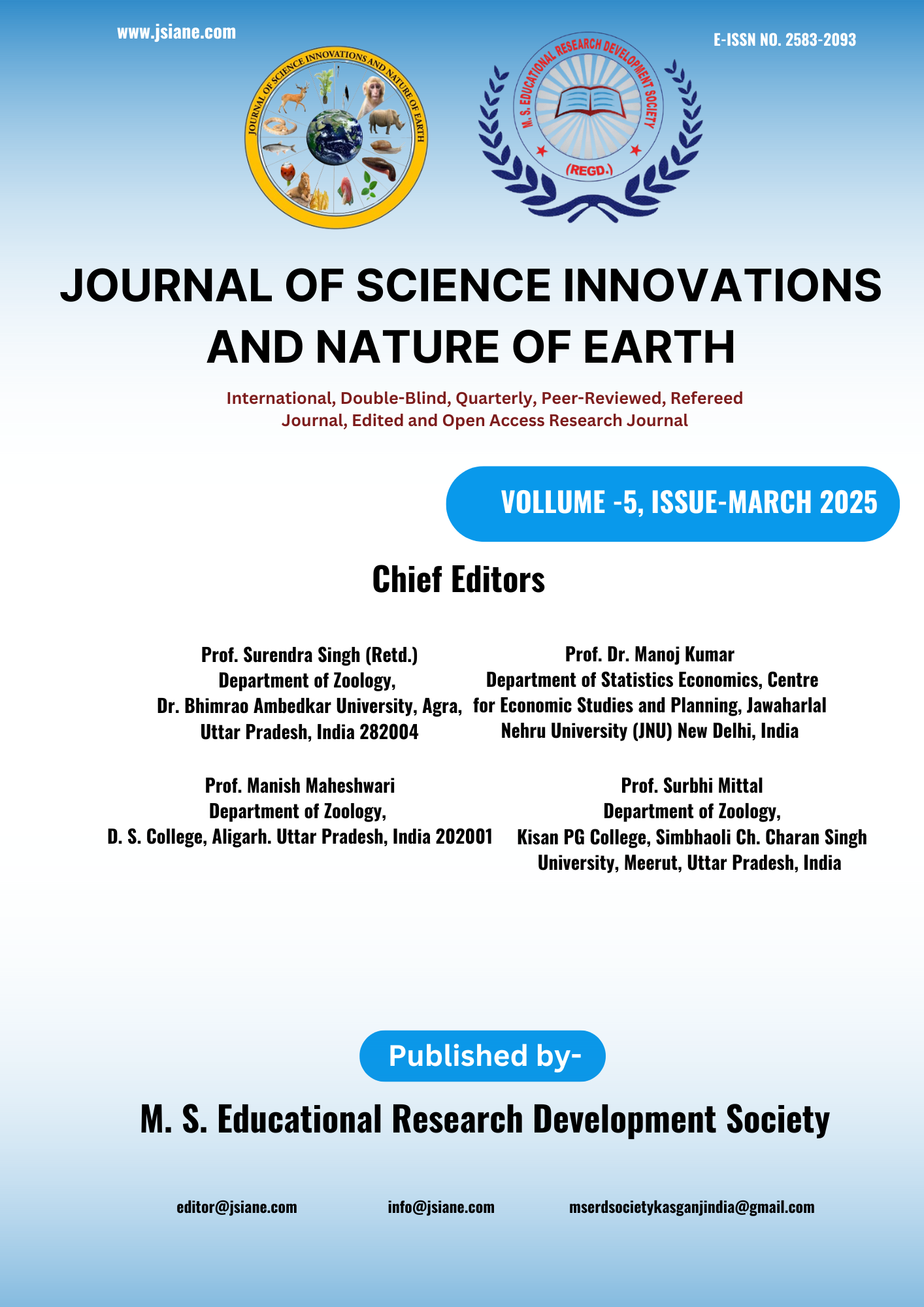Sub-lethal Effects of Insecticides on Fish Behavior and Physiology
DOI:
https://doi.org/10.59436/jsiane.396.2583-2093Keywords:
Sub-lethal toxicity, fish physiology, behavior alteration, insecticides, aquatic toxicology, freshwater pollutionAbstract
Insecticides, widely used in agriculture and public health, often contaminate freshwater ecosystems, leading to sub-lethal exposures in aquatic organisms, particularly fish. Unlike lethal concentrations that cause immediate mortality, sub-lethal concentrations induce physiological and behavioral changes that may not be immediately fatal but can significantly impair survival, reproduction, and ecosystem balance. This paper reviews the sub-lethal impacts of commonly used insecticides, including organophosphates, pyrethroids, and neonicotinoids, on fish behavior (such as feeding, schooling, and predator avoidance) and physiological systems (like respiration, enzyme activity, hormone regulation, and immune function). The study draws on recent experimental evidence from various geographic regions, with special attention to Indian freshwater ecosystems. Understanding these subtle yet significant effects is vital for environmental monitoring, fish conservation, and pesticide policy regulation
References
Singh, A., Tiwari, N., & Sharma, R. (2021). Pesticide usage pattern and its environmental implications in Uttar Pradesh, India. Journal of Environmental Biology, 42(3), 675–684.
Srivastava, S., Pandey, D., & Tripathi, M. (2020). Assessment of cypermethrin toxicity on behavior and histopathology of Channa punctatus. International Journal of Fisheries and Aquatic Studies, 8(1), 120–126.
Verma, S., Ali, S., & Khan, M. (2018). Comparative toxicity of chlorpyrifos and cypermethrin on Labeo rohita. Toxicology International, 25(1), 33–39.
Dwivedi, S., Singh, R., & Bhardwaj, R. (2020). Gill histopathology of Clarias batrachus exposed to pesticide contaminated water in Hardoi region. Environmental Toxicology Studies, 9(2), 98–105.
Rani, N., Sharma, M., & Singh, V. (2022). Evaluation of pesticide residues and sub-lethal effects on riverine fish from agricultural belts of eastern Uttar Pradesh. Journal of Environmental Protection and Sustainable Development, 10(4), 203–210.
Tripathi, P., & Shukla, S. (2019). Biomarker response in fish exposed to organophosphates in Gomti River. Toxicology Reports, 6, 472–479.
Sarikaya, R., & Yilmaz, M. (2003). Investigation of acute toxicity and the effect of pyrethroid deltamethrin on behavior of the freshwater fish Cyprinus carpio. Environmental Toxicology and Pharmacology, 13(3), 195–201.
David, M., et al. (2004). Fenvalerate toxicity on behavioural and physiological responses in Labeo rohita. Journal of Environmental Biology, 25(3), 321–326.
Karmakar, R., et al. (2021). Sub-lethal effects of imidacloprid on feeding and locomotor behavior in Nile tilapia. Ecotoxicology and Environmental Safety, 211, 111904.
Velmurugan, B., et al. (2009). Biochemical and histopathological effects of chlorpyrifos on freshwater catfish Heteropneustes fossilis. Food and Chemical Toxicology, 47(2), 502–507.
Jayanthi, J., et al. (2012). Histopathological changes in gill, liver and kidney of Channa punctatus exposed to deltamethrin. Pesticide Biochemistry and Physiology, 104(2), 124–129.
Patil, V. K., & David, M. (2010). Oxidative stress and antioxidant responses in Clarias batrachus exposed to sub-lethal fenvalerate. Environmental Toxicology and Pharmacology, 29(3), 254–261.
Scott, G. R., & Sloman, K. A. (2004). The effects of environmental pollutants on complex fish behavior: integrating behavioral and physiological indicators of toxicity. Aquatic Toxicology, 68(4), 369–392.
Zala, S. M., & Penn, D. J. (2004). Abnormal behaviors induced by chemical pollution: a review of the evidence and new challenges. Animal Behaviour, 68(4), 649–664.
Tierney, K. B., et al. (2007). Fish behavior as a biomarker of sub-lethal toxicity. Environmental Toxicology and Chemistry, 26(1), 1–14.
Joshi, P. K., et al. (2007). Hematological response in Labeo rohita exposed to sub-lethal concentration of endosulfan. Indian Journal of Fisheries, 54(2), 175–181.
Kumar, R., & Pandey, R. S. (2018). Toxicological effects of pesticide exposure in freshwater fish: field and laboratory observations from Uttar Pradesh. Indian Journal of Experimental Biology, 56(10), 707–713.
Singh, A. K., et al. (2020). Synergistic effects of temperature and pesticide exposure on freshwater fish: a study on Heteropneustes fossilis. Environmental Science and Pollution Research, 27(12), 13956–13968.
Zhang, Y., et al. (2022). Transcriptomic response of zebrafish to imidacloprid: insights into neural, immune, and apoptotic pathways. Aquatic Toxicology, 244, 106061.
Schwarzenbach, R. P., et al. (2010). The challenge of micropollutants in aquatic systems. Science, 313(5790), 1072–1077.
Ahmed, M. K., Habibullah-Al-Mamun, M., et al. (2019). Ecotoxicological effects of pesticides on freshwater biodiversity. Chemosphere, 227, 417–426.
Ali, D., Alarifi, S., et al. (2022). Sub-lethal exposure of pesticide mixtures causes oxidative stress and DNA damage in fish. Ecotoxicology and Environmental Safety, 231, 113202.
Bhushan, B., Yadav, A., & Sharma, P. (2020). Monitoring of pesticide residues in water and sediments from Ganga River basin. Environmental Monitoring and Assessment, 192, 576.
Dutta, T., et al. (2021). Pesticide bioaccumulation in edible fish species and its human health risks. Environmental Pollution, 268, 115947.
Gupta, P., & Saxena, A. (2020). Pyrethroid toxicity in freshwater fishes: Mechanism and mitigation. Environmental Toxicology and Pharmacology, 78, 103404.
Downloads
Published
Issue
Section
License
Copyright (c) 2025 Maharaj Singh Educational Research Development Society

This work is licensed under a Creative Commons Attribution-NonCommercial 4.0 International License.










